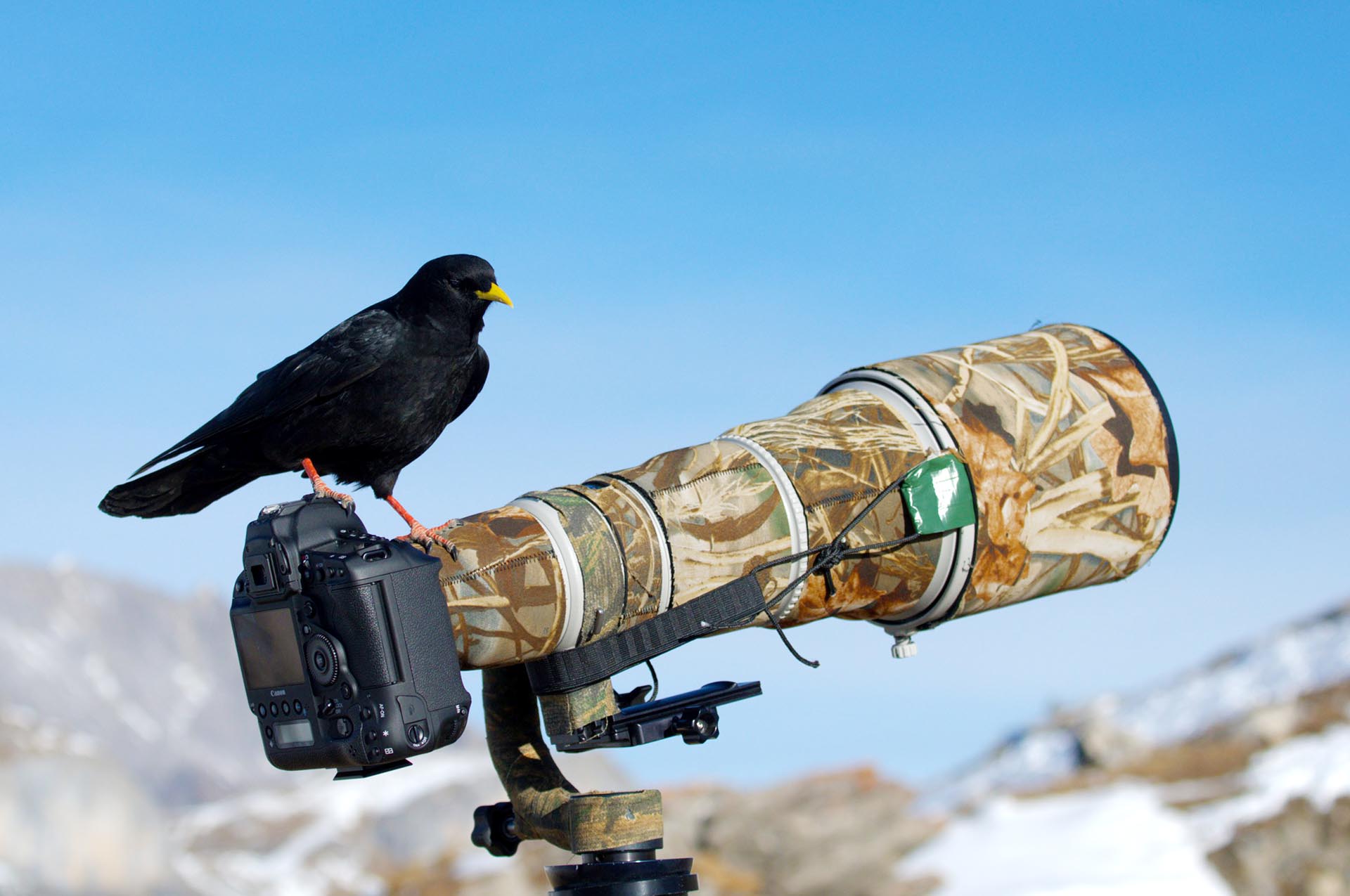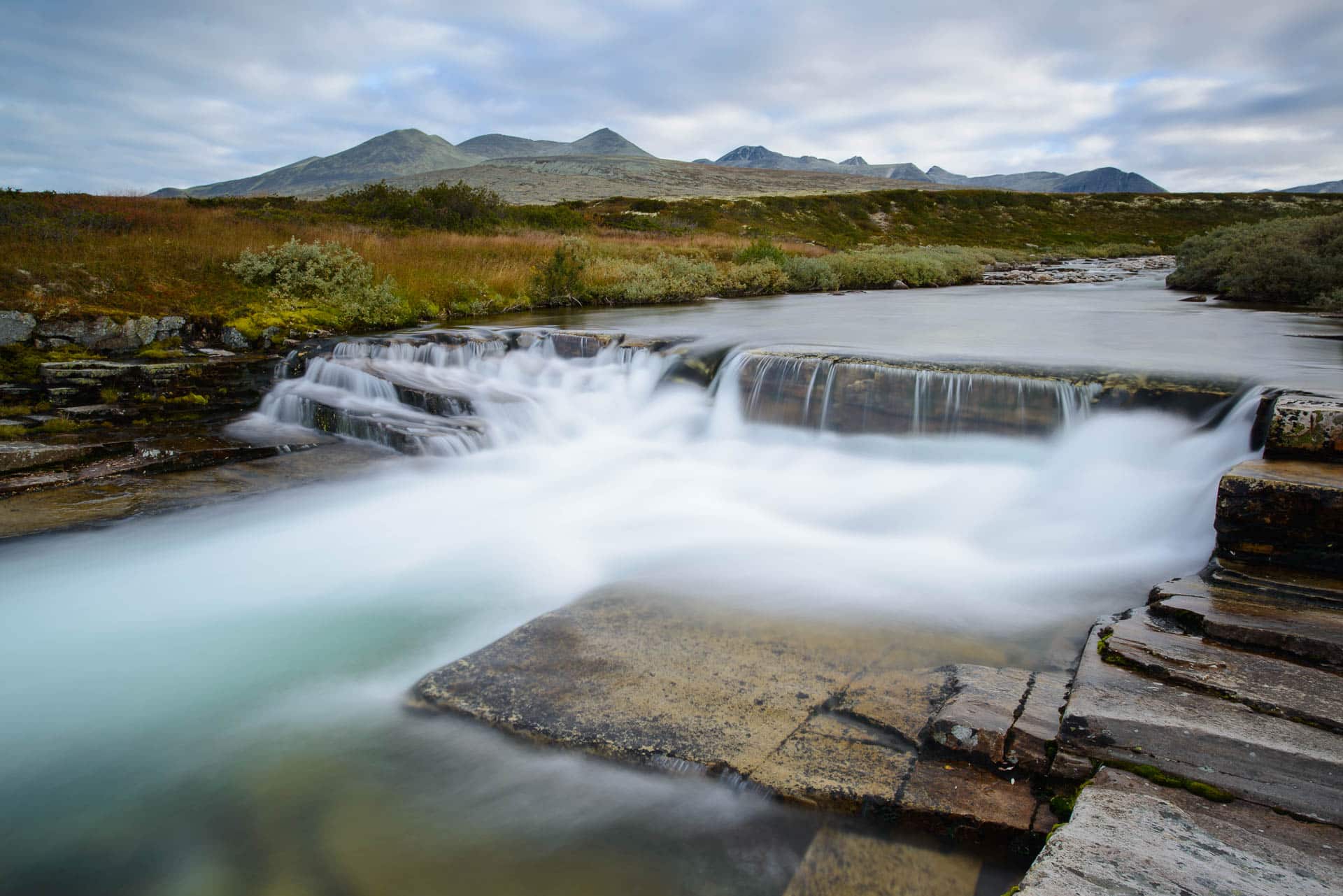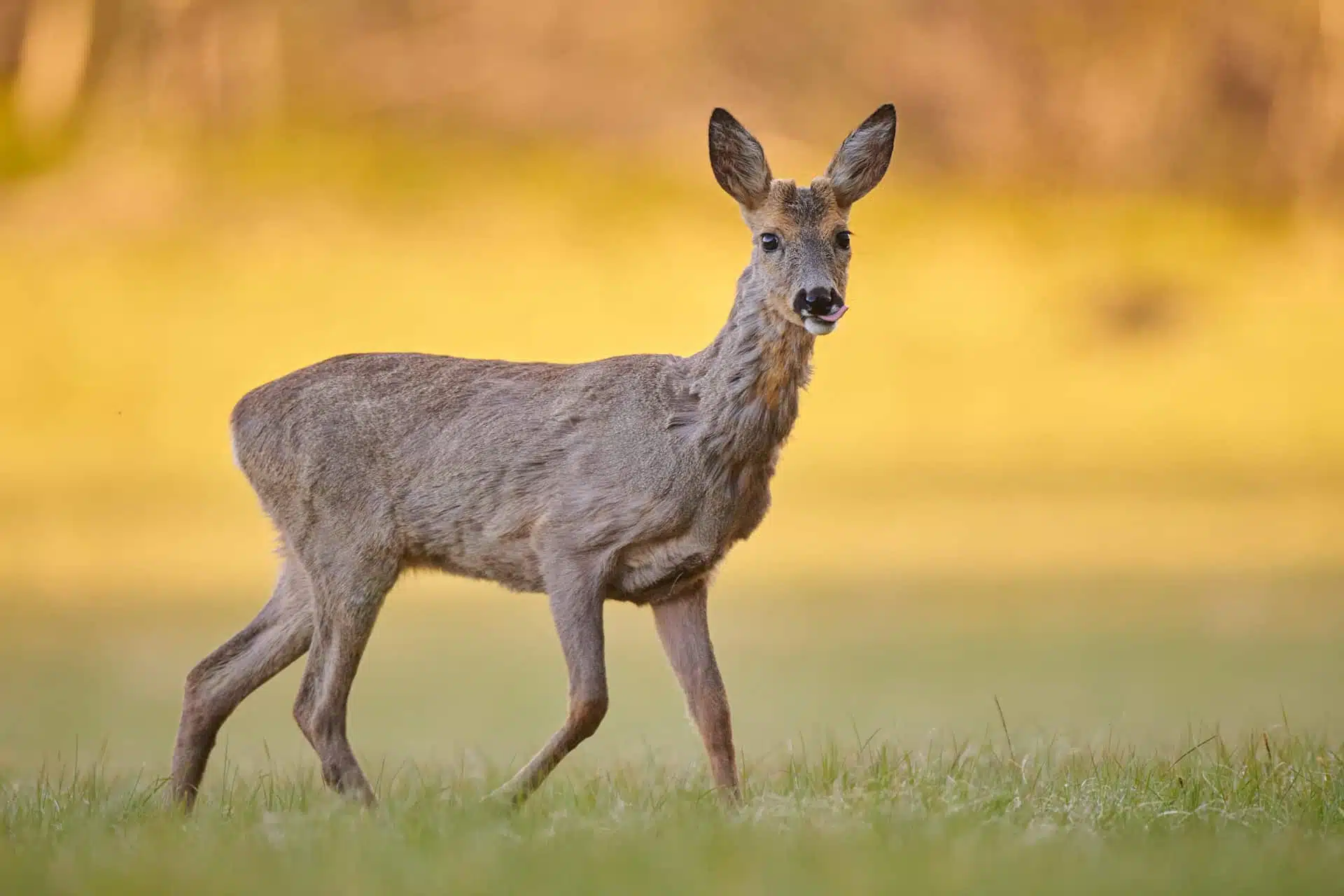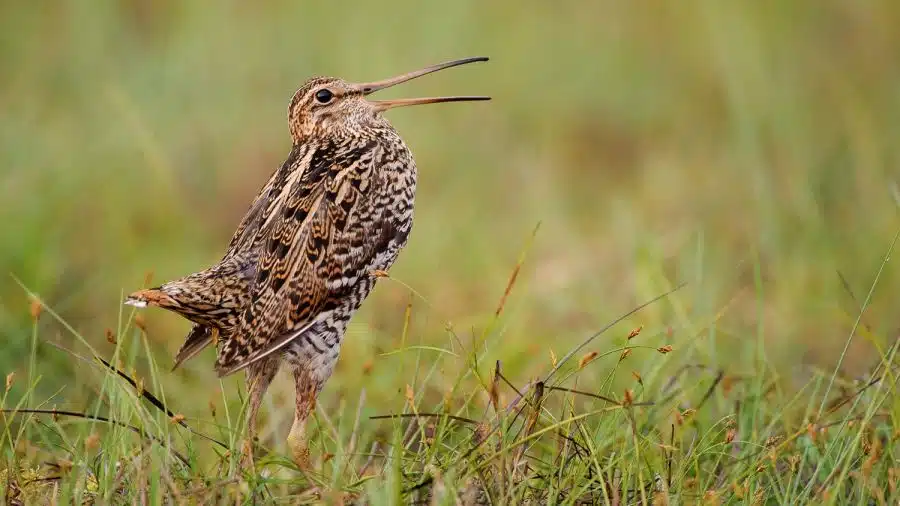I have been photographing wildlife for many years – from white-tailed eagles to foxes and lynxes in the Bavarian Forest. One experience has been confirmed time and again: choosing the right lenses for wildlife photography determines whether a picture is successful or not. Telephoto lenses naturally play a central role in my own wildlife photography equipment.
I’ve been shooting with the Nikon system ever since I started taking photos. Why? Because I’m used to it – no more and no less.
Nikon has a long tradition in nature and sports photography. Whether classic F-mount lenses or the new Z-mount models – both systems offer an impressive selection of focal lengths that are suitable for various situations in wildlife photography. Nikon telephoto zooms and fixed focal lengths in particular impress with their robustness, image quality and practicality in the field.
In this article, I will give you a comprehensive overview of the best Nikon telephoto lenses for wildlife photography. I explain the basics, go into the most important focal lengths and show you specific recommendations – from beginner zooms to professional fixed focal lengths. I also share my own practical experience and give tips on how to make the right decision for your photographic journey.
- Telephoto lens basics
- Focal length ranges for wildlife photography
- Nikon telephoto zooms vs. fixed focal lengths
- Nikon teleconverters: The TC series
- Lens recommendations by category
- Practical tips for various wildlife areas
- Technical considerations and practical tips
- Avoid common mistakes
- Buying advice: making the right choice
- Conclusion

Join me on my photo tours and immerse yourself in the world of wild landscapes and unique encounters. Together we will hone your photographic skills – practical, creative and full of inspiration. Secure your place now and rediscover the magic of light and nature.
Telephoto lens basics
When you enter the world of wildlife photography equipment, the variety of lenses can seem overwhelming at first. Over the years, I’ve tried many different models myself – from classic F-mount to modern Z-mount telephoto lenses. Here are the key basics to help you make the right decision:
F-Mount vs. Z-Mount
Nikon has shaped the F-mount system for decades, which is still valued today for its huge selection of lenses. Many of these telephoto lenses are available second-hand at very reasonable prices – and with the FTZ adapter they are also excellent for use on Z cameras.
The Z-mount lenses, on the other hand, are more modern, often lighter and benefit from Nikon’s latest technology. Most of my lenses are old-timers – they are sufficient for my work. However, I now also own a few Z-mount lenses.
VR (Vibration Reduction)
An image stabilizer is very useful in wildlife photography with a telephoto lens. Nikon calls this technology “VR”. It enables sharp hand-held images even at longer focal lengths – especially at dusk or when you can’t use a tripod. The prerequisite is, of course, that the subject remains still for this long – not always the case with animals. That’s why you can’t beat every situation with a good VR, but often also need the light intensity.
AF-S vs. AF-P
The designations stand for different autofocus motors:
- AF-S: Uses the proven Silent Wave motor – precise, fast and reliable
- AF-P: relies on a modern stepper motor that reacts more quietly and even faster
For me, the autofocus performance is crucial, especially for birds in flight – both technologies have convinced me here, as long as you know how to adjust the camera settings.
ED glass and nanocrystal coating
Sounds technical, but it makes a big difference in practice: ED lenses minimize chromatic aberration and the nanocrystal coating ensures fewer reflections and loss of contrast. This is particularly exciting when shooting against the light. Without coatings, backlighting can become a challenge.
Weather sealing
Wildlife photography means: wind, rain, dust – and often all at the same time. Nikon telephoto lenses are robustly built and many models are additionally sealed. On a safari in Tanzania, I was once caught in a sudden sandstorm – my Nikon telephoto survived without complaint.
Tripod clamp
Sounds like a detail, but it is indispensable. Especially with heavy super telephoto lenses, the tripod clamp enables perfect balance on the monopod or tripod. Unfortunately, the tripod points supplied are often not particularly solid and the camera wobbles in them. But there is a remedy for this.
Focal length ranges for wildlife photography
For me, the right focal length is the most important lever in wildlife photography. It determines which subjects I can photograph at all, how large the image section is, how quietly I can work – and ultimately also how “close” and intense an image appears.
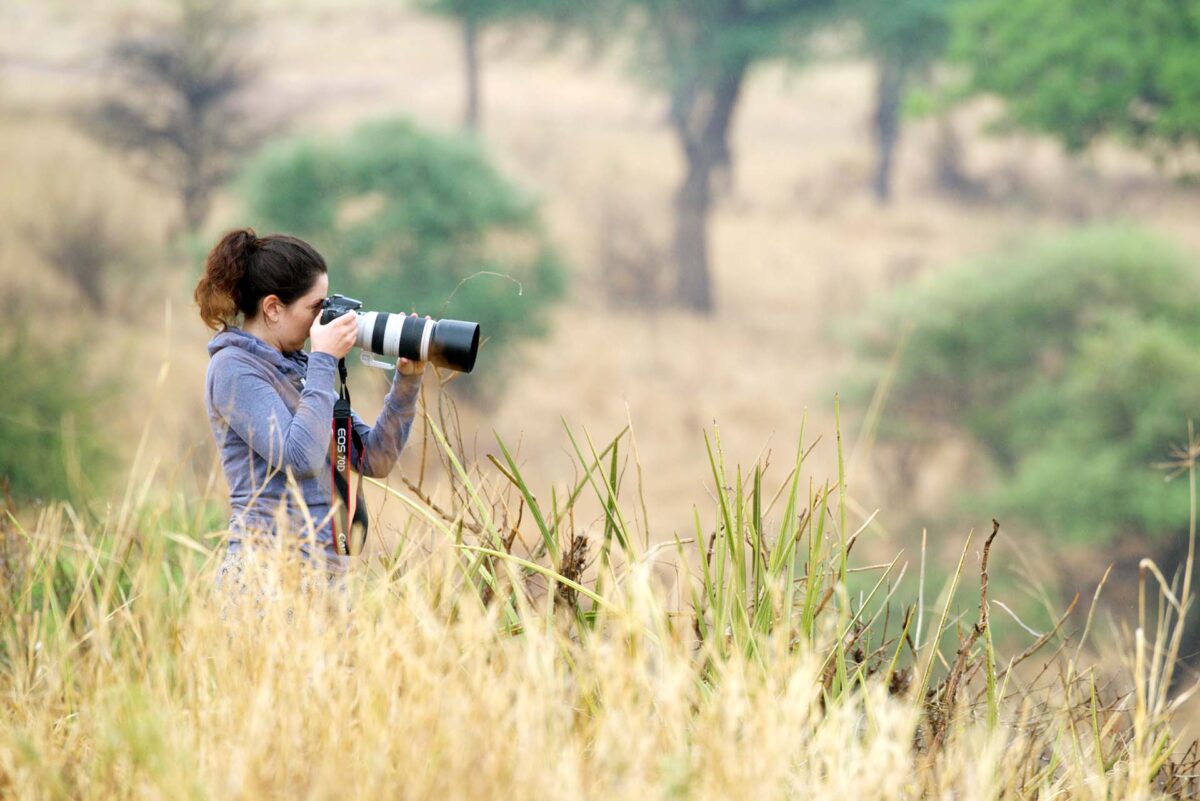
Medium telephoto lenses (85-200 mm)
I use these focal lengths for larger wildlife at medium distances, for atmospheric shots with surroundings and for safari situations where animals are often closer than you think. I love photographing deer at 135mm in the morning haze – close enough to show detail but wide enough to include the habitat.
Long telephoto lenses (200-400 mm)
This is the “sweet spot” for me. This is where I photograph deer, foxes, ibex, herons, sea eagles and much more. Versatile, suitable for touring, manageable.
Classics are zooms such as the 100-400 mm or 180-600 mm, but also fixed focal lengths such as the 300 mm PF. On safari in South Africa in Kruger National Park, I photographed almost everything with 80-400 mm – from elephants to lions, from pronghorns to kudus.
Super telephoto lenses (400 mm+)
Indispensable for birds and shy species. 500-600 mm is my standard, I use 800 mm or more for songbirds or cautious species. Fixed focal lengths deliver the highest quality, zooms more flexibility. It should also not be underestimated that these lenses help to crop the subject better, which means that you can avoid unsteady backgrounds.
It is important to think about technology and tripods – waiting in a camouflage tent with a 600 is exhausting, but often exactly what is needed to capture undisturbed moments.
Nikon telephoto zooms vs. fixed focal lengths
When it comes to equipment for wildlife photography, there is one of the key decisions: Do I go for a flexible telephoto zoom or a highly specialized fixed focal length? I’ve worked with both over the years – from 70-200mm to 600mm f/4 – and each solution has its pros and cons. Nikon offers a good selection for both types.
Why zooms are so popular in wildlife photography
Zooms give me the flexibility I need, especially when I’m out and about and don’t know exactly what distance or which animals I’ll encounter. A deer suddenly steps out of the forest? I zoom to 200 mm. A buzzard sitting far away on a post? I shoot up to 500 or 600 mm. Zooms are unbeatable at such moments.
F-mount classic:
- AF-S 70-200 mm f/2.8E FL ED VR
- AF-S 80-400 mm f/4.5-5.6G ED VR
- AF-S 200-500 mm f/5.6E ED VR
- AF-P 70-300 mm f/4.5-5.6E ED VR
Z-Mount innovations:
- NIKKOR Z 70-200 mm f/2.8 VR S
- Z 100-400 mm f/4.5-5.6 VR S
- Z 180-600 mm f/5.6-6.3 VR
Why I love fixed focal lengths
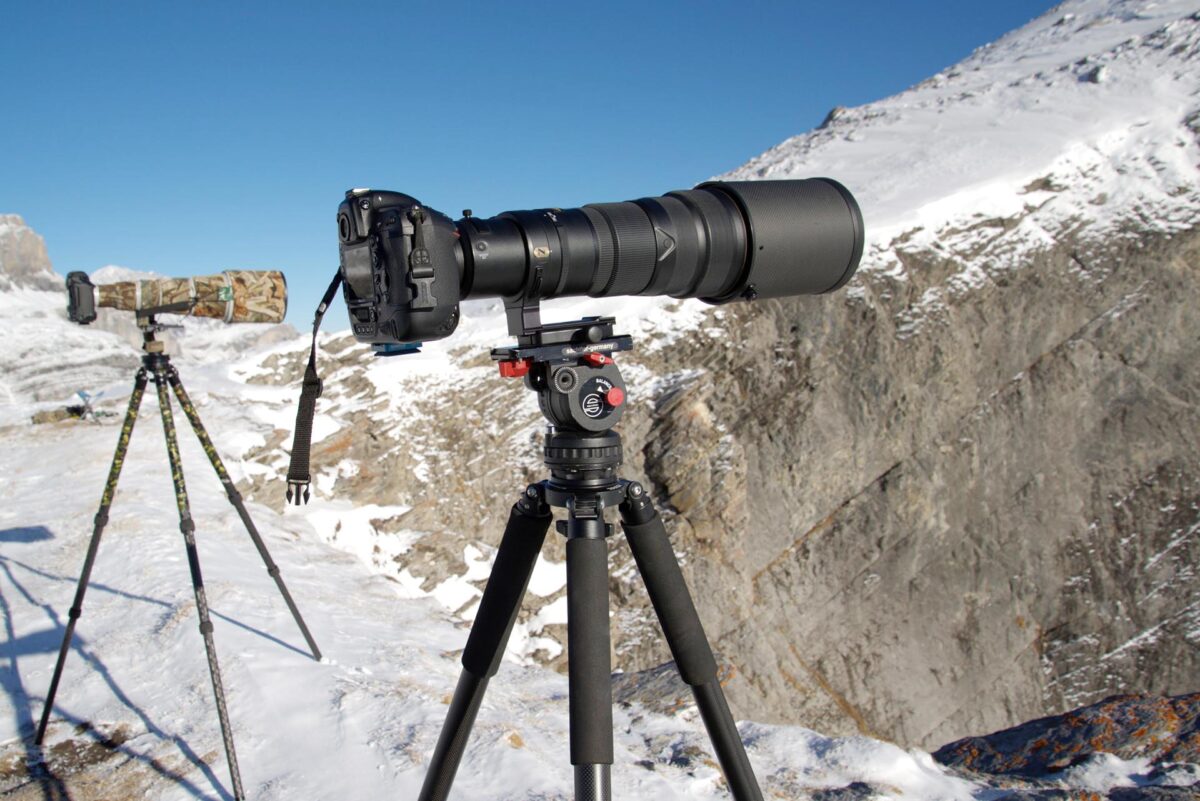
If I know what subject I’m aiming for – such as a sea eagle in flight, a deer in the morning mist or a bee-eater on a cliff face – then I go for a fixed focal length. They simply deliver the best image quality, the fastest autofocus and the highest light intensity.
F-mount legends:
- AF-S 300 mm f/2.8G VR II
- AF-S 300 mm f/4E PF VR
- AF-S 400 mm f/2.8E FL
- AF-S 500 mm f/4E FL
- AF-S 600 mm f/4E FL
- AF-S 800 mm f/5.6E FL
Z-Mount S-Line:
- Z 400 mm f/2.8 TC VR S
- Z 600 mm f/4 TC VR S
- Z 800 mm f/6.3 VR S
My conclusion
For me, zooms are the best choice for beginners and all-rounders: more flexible, cheaper, easier to handle. With a 200-500 mm or 180-600 mm you are equipped for almost all wildlife.
Fixed focal lengths are for ambitious photographers and professionals: ultimate image quality, best low-light performance, but heavier and more expensive. I mainly use them for specific projects when perfect sharpness and cropping are required.
Tip: If you want to directly compare the optical performance of Nikon lenses, DxOMark is an excellent resource. There you can objectively compare many Nikon telephoto lenses in terms of sharpness, bokeh, transmission and distortion. I myself regularly use the site to compare technical impressions with my practical experience.
Nikon teleconverters: The TC series
A teleconverter (TC) extends the focal length of your lens by placing it between the camera and the lens. For me, they are an important tool when I simply need more reach for shy animals or birds without having to invest in an expensive super telephoto fixed focal length.
The image quality decreases (of course, there are more lenses between the subject and the sensor), the autofocus becomes slower (the sensor then also receives less light), but the subject size increases. Teleconverters help immensely with the old saying “If you can’t photograph it well, at least make it big”.
Available teleconverters
F-mount teleconverter:
- TC-14E III (1.4×)
- TC-17E II (1.7×)
- TC-20E III (2.0×)
Z-mount teleconverter:
- Z TC-1.4×
- Z TC-2.0×
Integrated teleconverter:
- Z 400 mm f/2.8 TC VR S (560 mm f/4)
- Z 600 mm f/4 TC VR S (840 mm f/5.6)
Compatibility
F-mount: 1.4× works with almost all large AF-S fixed focal lengths. 200-500 mm not officially compatible, but works to a limited extent.
Z-Mount: compatible with 70-200/2.8, 100-400, 400/2.8 TC, 600/4 TC, 800/6.3, not with Z 180-600 mm.
Practical examples
- 300 mm f/2.8 + 1.4× = 420 mm f/4 – excellent for birds of prey
- 500 mm f/4 + 2.0× = 1000 mm f/8 – extreme, only in the best light
- Z 600 mm f/4 + integrated TC = 840 mm f/5.6 – my dream setup for birds
- Z 100-400 mm + Z 1.4× = 140-560 mm f/6.3-8 – solid entry-level combination
Conclusion: 1.4× converters can almost always be used, 2.0× is only recommended with absolute top fixed focal lengths, integrated converters are unbeatable in practice.
Lens recommendations by category
The selection of Nikon telephoto lenses is large – from inexpensive entry-level zooms to high-end fixed focal lengths.
Entry-level telephoto lenses
- NIKKOR Z 180-600 mm f/5.6-6.3 VR
- AF-S 200-500 mm f/5.6E ED VR
- NIKKOR Z 100-400 mm f/4.5-5.6 VR S
Mid-range telephoto lenses
- NIKKOR Z 100-400 mm f/4.5-5.6 VR S
- AF-S 300 mm f/4E PF ED VR
- NIKKOR Z 180-600 mm f/5.6-6.3 VR
Professional telephoto lenses
- NIKKOR Z 400 mm f/2.8 TC VR S
- NIKKOR Z 600 mm f/4 TC VR S
- NIKKOR Z 800 mm f/6.3 VR S
Of course, depending on your budget, these models can also be exchanged for older F-mount models. Basically, you should carefully consider whether the money is not better invested in a used, high-performance fixed focal length than in a new telephoto zoom of the latest generation.
I’ve always photographed with used older models, and I wouldn’t say that I’ve ever failed to take a picture because of the older lens.
Practical tips for various wildlife areas
Bird photography
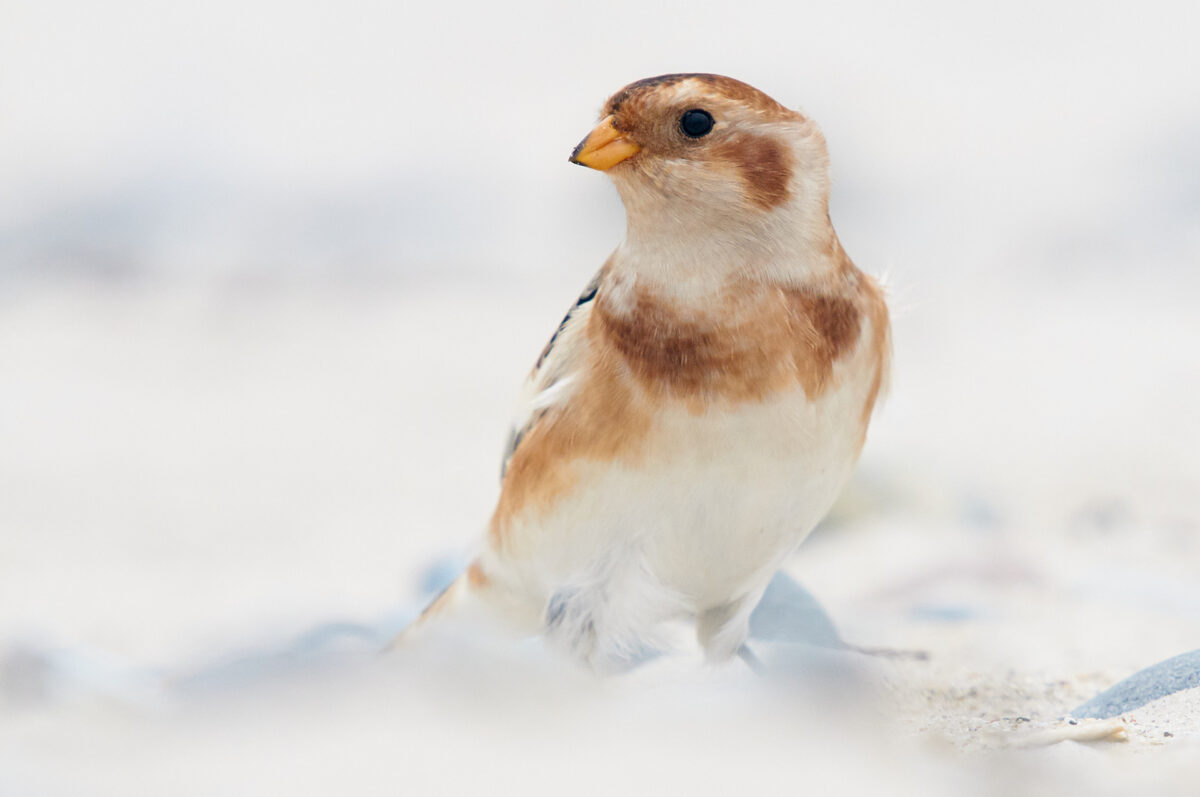
Birds are small, fast and usually shy. For songbirds you need a lot of focal length, for birds of prey in flight you need above all autofocus performance. From 400 mm upwards is mandatory, for songbirds usually 600-800 mm. Flight shots are successful with AF-C and 1/2000 s or faster, for perched birds patience and camouflage are crucial.
Recommendations: Z 180-600 mm (beginner), 300 mm PF + TC-14E (mid-range), Z 600 mm f/4 TC (professional).
Large animal photography
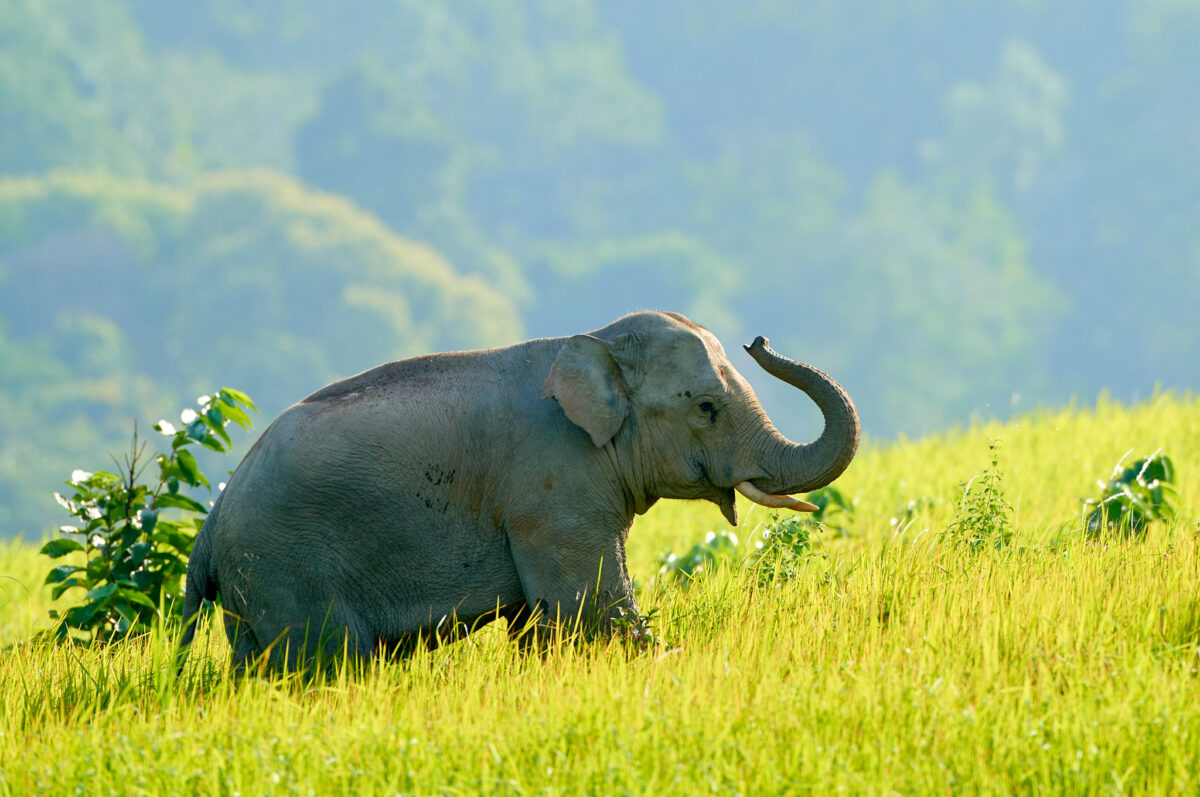
Elephants, bison or deer – large animals often require less focal length, but robustness and speed. On safari, I prefer to use the combination of 70-200 mm + 180-600 mm. Domestic ungulates often work perfectly with 200-400 mm (especially where they are not so heavily hunted).
Recommendations: AF-S 200-500 mm (beginner), Z 100-400 mm (mid-range), Z 400 mm f/2.8 TC (professional).
Shy forest animals
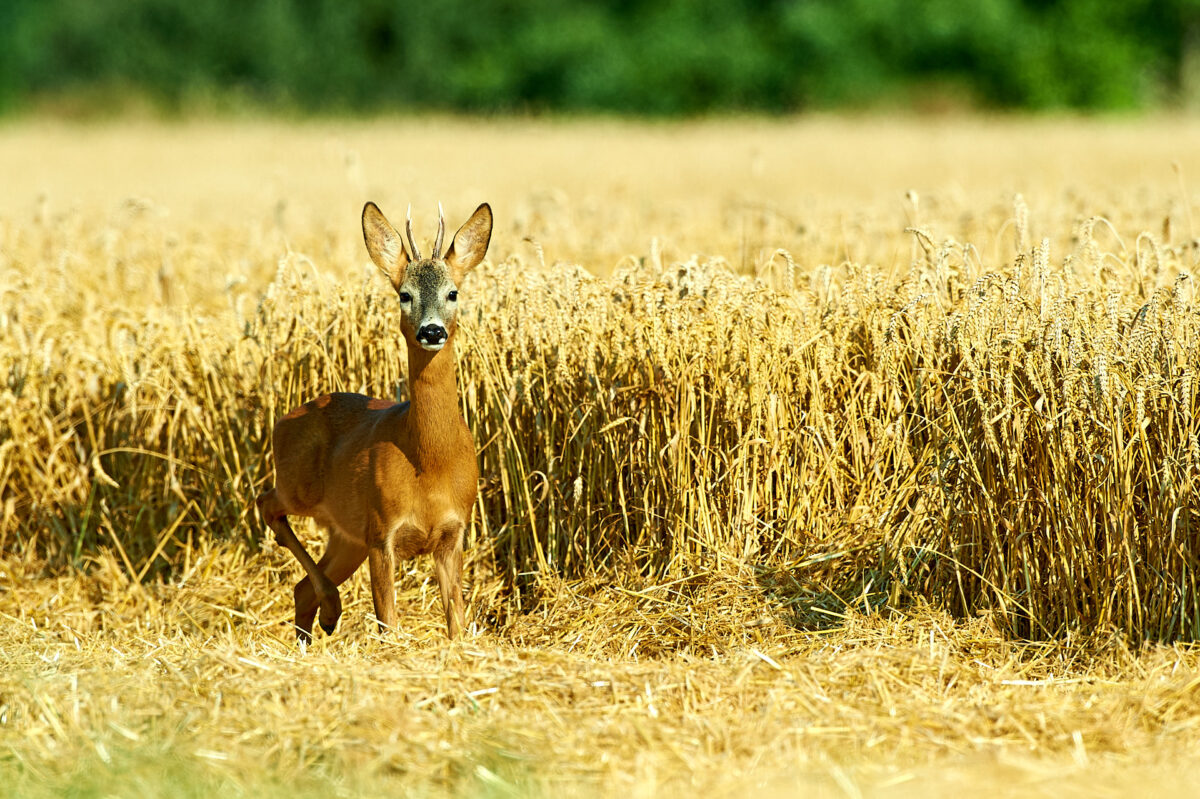
Deer, foxes and badgers are cautious and often out and about in poor light. Range, speed and a steady hand are crucial. For stalking I love the lightweight 300 mm PF, in the camouflage tent I rely on a 600 mm f/4.
Recommendations: Z 180-600 mm (beginner), 300 mm PF (mid-range), Z 600 mm f/4 TC (professional).
Technical considerations and practical tips
Tripods and stabilization
For super-teles from 500 mm, almost always monopod or gimbal. Tripod with gimbal in a camouflage tent, monopod on safari. Handheld works with 100-400 mm or 300 mm PF. You can find a short guide to the right tripods here.
Autofocus
AF-C is a must. Animal/eye detection on the Z9/Z8 is impressive, but I prefer to use small fields when the background is unstable. Back-button focus is one of my most important techniques. The autofocus is only triggered when I press the AF-ON button, but not when I press the shutter release. This allows me to decide for myself when and for how long the camera focuses.
Avoid common mistakes
- Overestimate manual handling: A 600 or 500 cannot be held in the hand for long
- Disregard light intensity: f/6.3 is sufficient in the sun, f/4 is worth its weight in gold in the forest or at dusk
- Overestimate teleconverters: 2.0× is rarely useful
- Underestimate weight: It’s better to use a lighter tele, but use it regularly
- Not practicing enough: train your technique beforehand
- Ignore the behavior of the animals: Distance and respect are more important than any focal length
Buying advice: making the right choice
Zoom or fixed focal length? Zooms are flexible, cheaper and lighter, while fixed focal lengths deliver maximum quality and light intensity.
New or used? New = warranty and state-of-the-art technology, used = much cheaper, especially in F-mount.
Rent before you buy: A weekend of testing often saves expensive bad purchases.
Conclusion
Telephoto lenses are the key to wildlife photography. Nikon offers the right tool for every project, from the fairly priced 180-600 mm to the fast 400/2.8 and 600/4.
My recommendation for beginners: the NIKKOR Z 180-600 mm f/5.6-6.3 VR.
For the next step: the Z 400 mm f/2.8 TC or Z 600 mm f/4 TC or an F-mount equivalent – depending on the focus (action or reach).
In the end, it’s not just the technique that counts. Patience, observation skills and respect for the animals are at least as important as the choice of lens. With the right Nikon equipment and the right approach, you can take pictures that show wild animals in all their beauty.

